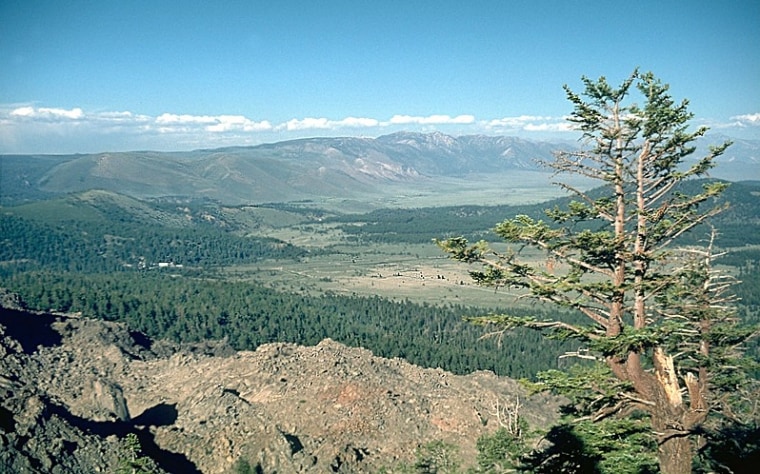There's some good news and bad news regarding a sleeping supervolcano in California.
The good news is that the Long Valley caldera, like her big sister Yellowstone in Wyoming, is not getting ready to super-erupt and again cover half of North America in ash. The bad news is that when Long Valley does someday get hot and bothered again, it may prove to be surprisingly bi-polar.
A new study that uses argon isotopes in the lava rocks to refine the timing of different eruptions over the last 160,000 years reveals that when Long Valley has spewed forth in the past, it's been in two very different styles at nearly the same time, which makes it a bit of a volcanic oddity.
One eruption style is a gloppy, not very explosive lava called basalt that poses little blast danger unless it contacts groundwater or snow.
The other sort of eruption involves more glass-rich or "silicic" magma that appears at Long Valley to hitch a ride with the basalt to the surface. When it gets there, it tends to come out of the ground in the more explosive, ashy style of Mount St. Helens.
"The result was kind of surprising to me," said geologist Gail Mahood of Stanford University and author of the new study in the latest issue of the Geological Society of America Bulletin. "It's the pairing (of the two kinds of eruptions) that was surprising."
Long Valley and the associated Mammoth Mountain resort area in east-central California have been extensively studied and monitored by geologists who have seen signs over the years that there is still hot basalt underground. Such signs include the doming of the earth in some places, the die-off of trees and dangerous releases of deadly carbon dioxide gas.
But there is a silver lining even to these ominous signs from below, said Mahood.
"The fact that we see big basalts come up means there is no big magma body down there," Mahood told Discovery News. That's because a vast pool of magma would absorb the basalt, she explained. "That's good news."
Another bit of good news is that all of the most recent eruptions happened along a straight north-to-south about 10 kilometers wide. "That means you can focus on this area," Mahood said.
"Professor Mahood's new research provides important additional information on the timing of past eruptions, but her results do not alter our prognosis for future eruptions in the Long Valley area," said Margaret Mangan, the Scientist-in-Charge of the U.S. Geological Survey's Long Valley Observatory.
That official prognosis puts the odds of an eruption in any given year at less than one percent. That's about the same odds for the San Andreas Fault letting loose another magnitude 8 earthquake like the one that destroyed San Francisco in 1906 on any given day.
"It's a low probability," agrees Mahood. She adds that it would not surprise her if there was a small eruption in the next 100 years somewhere along that north-south line. The worst case -- but not highly likely -- scenario is that the eruption would be at Mammoth Mountain.
